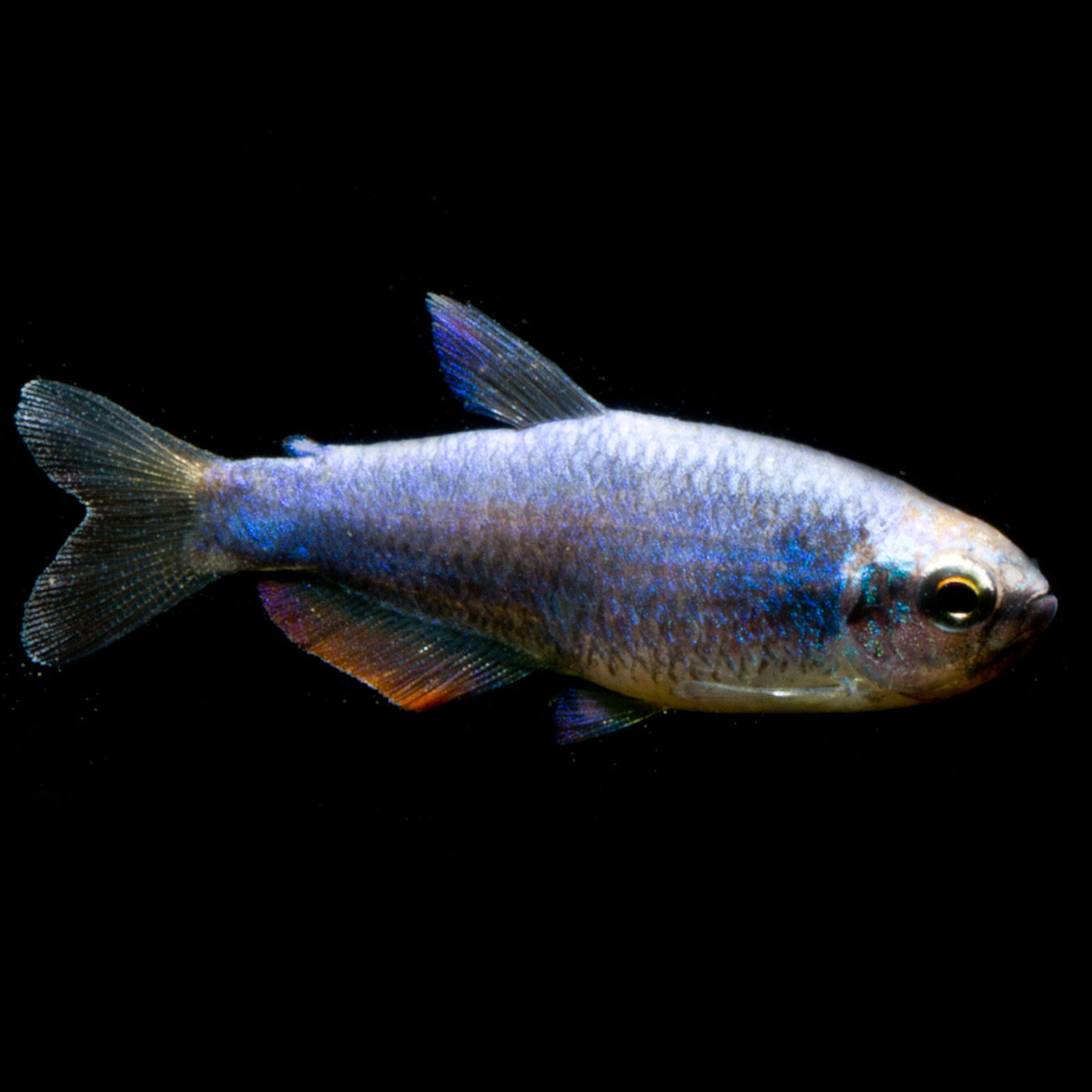Royal Tetra ‘Super Blue’
Inpaichthys kerri
The Royal Tetra ‘Super Blue’ is a great sight in the aquarium, especially when it shows its royal blue coloring in the light.
- peaceful schooling fish from South America
- calm nature
- intense blue coloring
1 in stock
 Delivery in a few working days
Delivery in a few working days
 Free shipping from €60 across Austria
Free shipping from €60 across Austria





Important data
Product description & details
The Royal Tetra originally comes from areas of the Rio Aripuana and Rio Madeira in South America. This beautiful tetra reaches a maximum length of 4.5cm. The breeding variant ‘Super Blue’ is characterized by an even more intense royal blue body color than the natural form.
Care in the aquarium
This peaceful schooling fish should be placed with at least 6-8 members of its species in an aquarium with a capacity of at least 80 liters and requires soft, acidic and clean water. The Royal Tetra is particularly grateful for the regular addition of humic substances. Dense planting, dimmed light and a dark substrate ensure that this characin feels comfortable and takes on an intense color. Similar large, peaceful fish such as cory catfish are suitable for socialization.
Feeding
As an omnivore, this tetra takes conventional ornamental fish food suitable for tetras, but live and frozen food should also be regularly on its menu.
Sexual characteristics and breeding
Male Royal Tetras are slightly larger than their female counterparts and are more intensely colored than their counterparts. The adipose fin is light blue in males, but reddish in females. While the males of the natural color form only show a metallic, shimmering blue color when they are adults, the males of the ‘Super Blue’ breeding form become colored when they are around 2cm long. In addition, the backs of the females, which are usually brown to pink, are also colored blue with this color variant. For successful breeding, the water should be very clean, low in nitrates, soft and rather acidic (<5°dGH, pH 5.5-6.0). An increased supply of live food stimulates the willingness to spawn. Royal Tetras are free-spawners, so the eggs are released and fertilized freely between preferably fine-feathered plants or mosses without subsequent brood care. Since this species is a spawning predator and does not stop at its own offspring, there should be a separate breeding tank from which the parents are removed immediately after spawning. The first feeding of the young fish, which hatch after around 24-30 hours, takes place after the yolk sac has been consumed with the smallest food such as dust food or infusoria and a little later with freshly hatched artemia nauplii.





